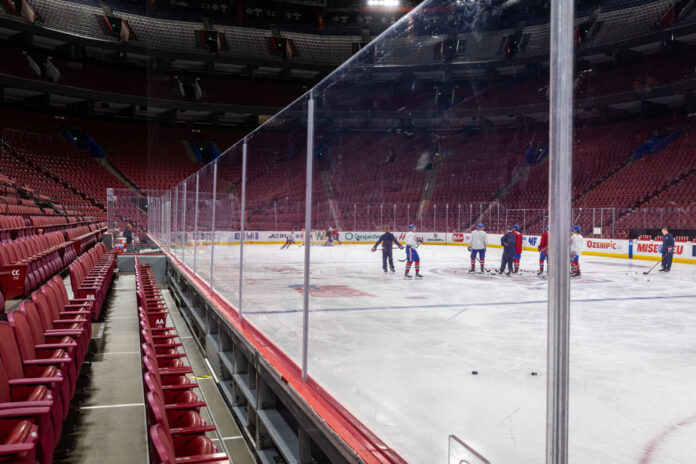Don’t look for the Blainville-Boisbriand Armada players on the ice on a game morning.
Make no mistake, they are definitely at the arena. In the weight room, probably. Maybe on synthetic ice to take a few shots. Otherwise in a meeting or video session. But not in their equipment, let alone on a frozen surface.
In the world of hockey, however, we have been skating on the morning of a match for around fifty years. In a report published in 2016, the New York Times attributed the beginnings of this practice to the Philadelphia Flyers of the early 1970s, who reportedly modeled their routine on that of the Soviet national team. After the Flyers won two Stanley Cups, in 1974 and 1975, other teams followed suit.
Hired as head coach of the Armada last summer, Mathieu Turcotte put an end to this tradition.
Turcotte didn’t take long to make his decision. The idea had been bouncing around in his head for a while. Expending energy a few hours before a match seemed “like nonsense” to him. So, when physical trainers Stéphane Dubé and Stefano Lanni provided him with a series of ultra-precise data which confirmed his impressions, he did not hesitate.
“They determined that a morning training session was pretty much the equivalent of half a game per player,” says Turcotte on the phone.
He describes his decision as a no-brainer.
“In a junior year, with the workload that is required, and given the physical maturity of a young team like ours, we found that it was not worth it. »
Although morning training is becoming less and less systematic, Armada remains one of the very few clubs at junior or higher level to have completely abandoned them. At the Bell Center, and in the NHL’s 31 other arenas, there is action on the ice several hours before spectators arrive.
The modus operandi is almost always the same: the home team skates around 10:30 a.m., and the visiting club around 11:30 a.m.
The format varies depending on organizations and circumstances. Some sessions can be very intense. Last Saturday, for example, the Chicago Blackhawks practiced their special teams for many minutes before facing the Canadian. The Habs, on the other hand, offered players who wanted to skip their turn. With a reduced group, the exercises are generally less rigid, and above all less intense.
“I think back in the day guys would drink on the eve of games and want to sweat it out the next morning,” Jordan Harris suggested with a laugh a few days ago.
The CH defender said it a bit as a joke. However, he was absolutely right on the general principle.
Stéphane Dubé worked for the Canadiens in the late 1990s, then for the Pittsburgh Penguins in the mid-2000s. “Not in the Maurice Richard era,” he notes.
Traditionally, confirms Luc Nadeau, professor in the physical education department at Laval University, morning training on the day of a match “were considered a form of activation and were not necessarily intended to improve performance.”
“30 or 40 years ago, professional hockey players did much fewer indoor training sessions than new generation players do,” he also recalls in an email exchange with La Presse.
Activation, as its name suggests, refers to the action during which the body activates and wakes up. It is considered an essential step for athletes, both those on Sunday and professionals, before practicing a sport.
It is, without naming it, this concept that players who extol the benefits of morning training describe: they get going.
Activation now comes in a different way. Strength training, stretching, mobility exercises… “The workload is not close to that of a morning workout,” assures Mathieu Turcotte.
The data he delivered to the Armada was collected using sensors worn by players of different calibers over the past few years. Everything is taken into account: the intensity and volume of training, acceleration, braking, etc.
Abandoning training on game mornings is “science 101,” continues Dubé, who also works for the Shawinigan Cataractes. “The energy you burn in the morning, you don’t have in the evening. If you practice at 10 a.m. and play again at 7 p.m., you never have enough time to recover. »
The rest factor is particularly decisive among junior-aged players. Some of them “are still in full physical development and are not yet mature,” emphasizes Luc Nadeau.
“Their recovery and endurance capacities to undergo these training loads are not the same as those of adult and physically mature players. »
Pushing the grade too much will downright “limit [their] development.”















